|
|
Post by grahamew on Nov 28, 2016 16:01:32 GMT -5
I wasn't sure. I thought it looked similar to the club/staff that White Thunder is cradling. I know gunstock clubs were used amongst other tribes (and I have seen slimmed down versions belonging to the Lakota), but has anyone seen people from other tribes with knife clubs? I've seen two illustrations of Cree people that I think feature the clubs, but the definite one is not contemporary to the events depicted. The only one I've seen in a photo is this tintype of a Shoshone or Nez Perce or...? And this looks like it's made of a couple of blades stuck in a manufactured/worked piece of wood: 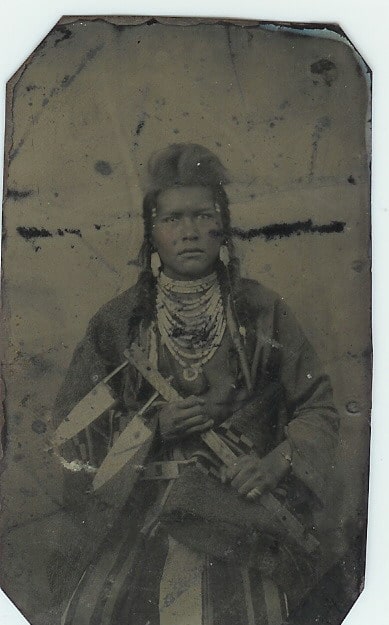 |
|
|
|
Post by wolfgang on Nov 29, 2016 3:36:08 GMT -5
Hey, the titel of the photo "Unidentified Lakota by Cross" on page 2 is "Ocaiehus, Sioux soldier Red Cloud Band".
|
|
|
|
Post by Dietmar on Nov 29, 2016 10:00:49 GMT -5
Thanks Wolfgang!
Does anyone know how to translate the name? And Wolfgang, do you have a better version of the picture?
|
|
|
|
Post by grahamew on Nov 29, 2016 13:25:17 GMT -5
Thanks. Interesting, in light of what we were talking about, that he is designated as soldier.
|
|
|
|
Post by wolfgang on Nov 29, 2016 14:21:43 GMT -5
Servus Dietmar, you know my email adress, than I will send you the photo in a better version for the forum.
|
|
|
|
Post by grahamew on Nov 29, 2016 14:59:24 GMT -5
We may have trouble with the idiosyncratic spelling of the name...
|
|
|
|
Post by kingsleybray on Nov 29, 2016 17:09:14 GMT -5
yes, I can't make sense of it yet
|
|
|
|
Post by grahamew on Nov 30, 2016 14:50:56 GMT -5
It's interesting that both Spotted Eagle and Long Dog carry their clubs in a number of photos (and over a period of several years in the case of Long Dog). There are three of Spotted Eagle - even if it's not the same club) plus the Haynes photos that shows him (a variant of which was posted above). There's a fourth if you believe it's him in that Canadian photo). To my knowledge, there's the Anderson photo taken in Canada of Long Dog (1877 or 8, unless he visited a little earlier), two Scott photos that have to be at least 1884 and the Barry photos that are probably around 1886. 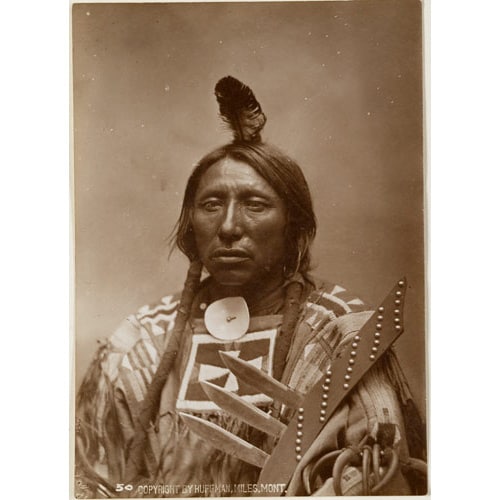 Spotted Eagle by Huffman 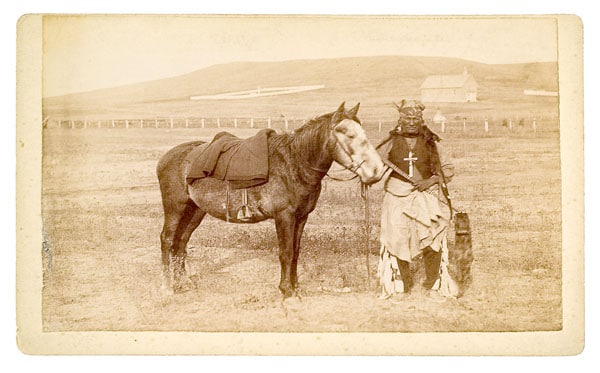 Long Dog by Barry, 86? This time he seems to be wearing a more standard pectoral cross as opposed to the crucifix seen in the Scott photo.  1885? 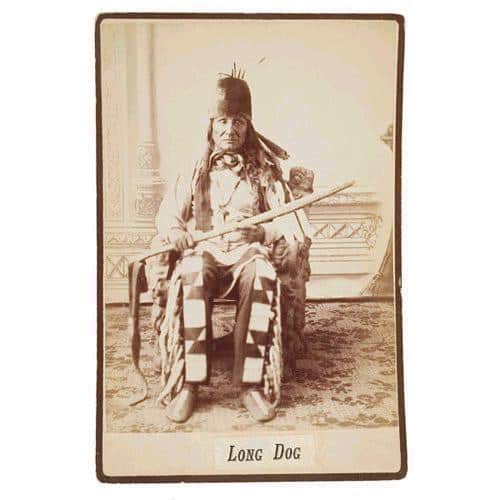 Barry, circa 1885? 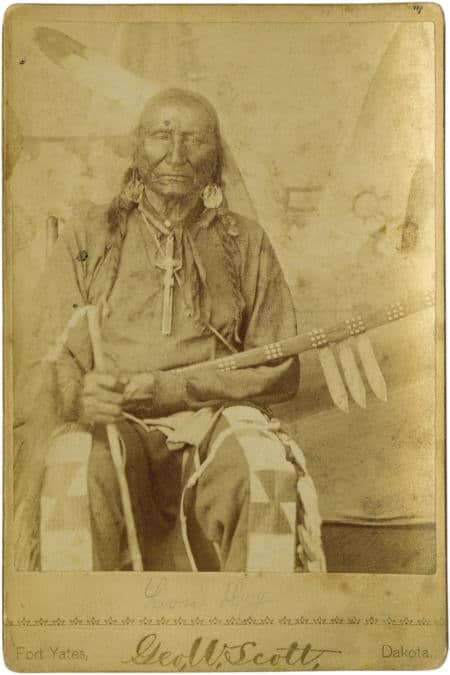 Scott, 1884+? I'd go for the 86 date for Long Dog and the horse (there is another of him mounted that I can't find at the moment) because there's a one of Rain-in the Face mounted with a very similar backdrop and Rain can be seen dressed the same (and mounted) in the background of one of those 'Trial of Sitting Bull' photos that Barry took and that supposedly happened in 1886. I've read somewhere that the crude tipi background is an indication that the Scott photos are post-84, but he seems to look more frail than he does in the Barry photo so I wonder if it's not dated after 86... |
|
|
|
Post by Dietmar on Nov 30, 2016 17:58:55 GMT -5
Thanks to Wolfgang for sending me this picture of Ocaiehus by William R. Cross: 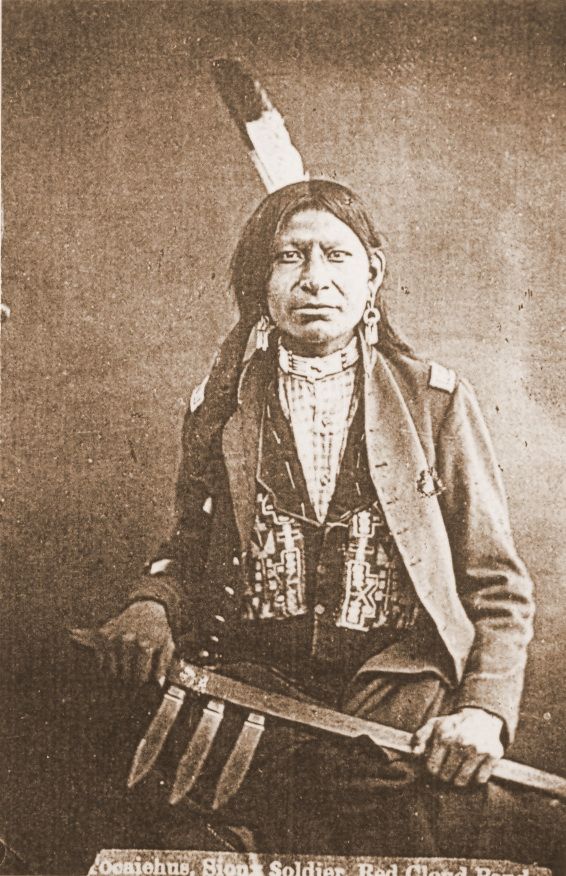 |
|
|
|
Post by Dietmar on Nov 30, 2016 18:09:31 GMT -5
This photograph from around 1860 of Big Eagle, a Mdewakanton Dakota, apparently shows that similar clubs were used as symbols of leadership among the parent group of the Dakota Sioux. 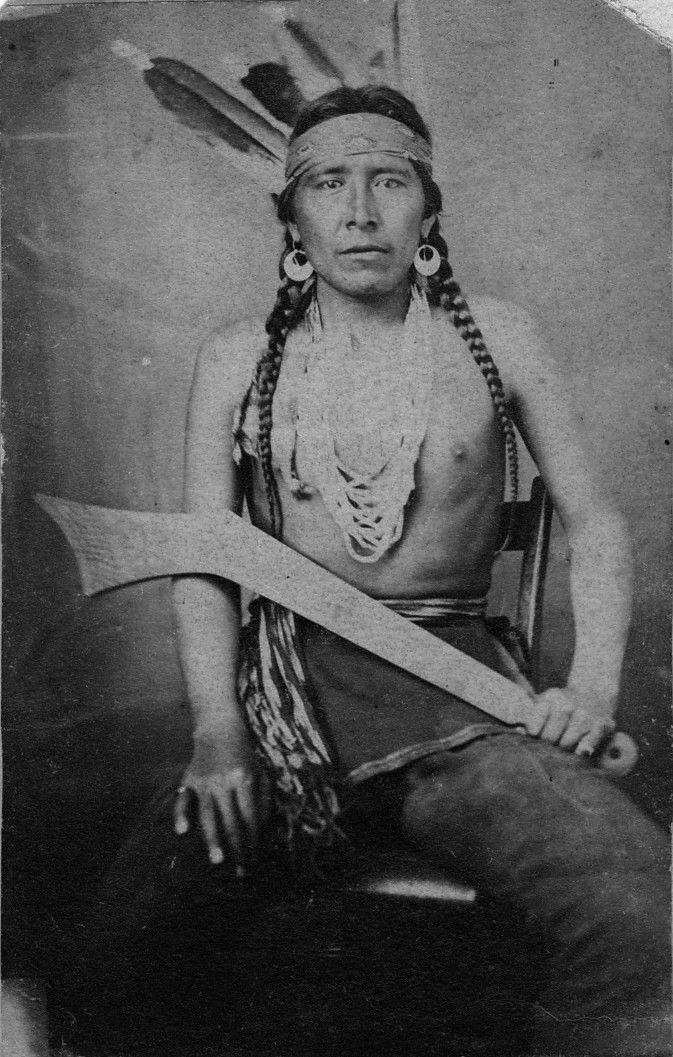 |
|
|
|
Post by grahamew on Dec 1, 2016 3:17:51 GMT -5
Nice to see the photo in such clarity. The waistcoat's interesting too.
|
|
|
|
Post by gregor on Dec 1, 2016 8:04:24 GMT -5
These gunstock clubs are old weapons. We can trace them back to the eastern woodlands and to the Iroquois and Mohawk. Iroquois first used ball-head clubs, a skull crasher. Some had iron spikes or a deer horn at the ball. In the early 17th century we find gunstock clubs in these woodland areas. Probably whites used their shot muskets as clubs in combats and the natives then produced similar clubs. There were also spikes or horns fixed at these gunstock clubs. The horns were later replaced by knife blades. These gunstock clubs came via Sauk and Fox to the Eastern Sioux and then about 1850-60 to the Lakota. Until then Lakotas preferred a stone head club (tacankahu).
I believe these gunstock clubs denominate the men in the photos as warriors respectively as war chiefs (in early times). Later they were used on ceremonial occasions. In the reservation years we find these clubs often in the funds of photographers, who used them as decoration in their photographs.
I think the club was very effective from horseback. The rider could use the club like an axe and plunge it into the back of an enemy and tear him from his horse. It is written, that the clubs were light enough not to throw the attacker off balance.
|
|
|
|
Post by grahamew on Dec 1, 2016 12:07:37 GMT -5
Packs the Drum/Drum on his Back/ Sitting Bull the Oglala (?) with a two bladed club at Fort Laramie, 1868; photo by Gardner:  Packs the Drum, Old Man Afraid of his Horses, Red Bear 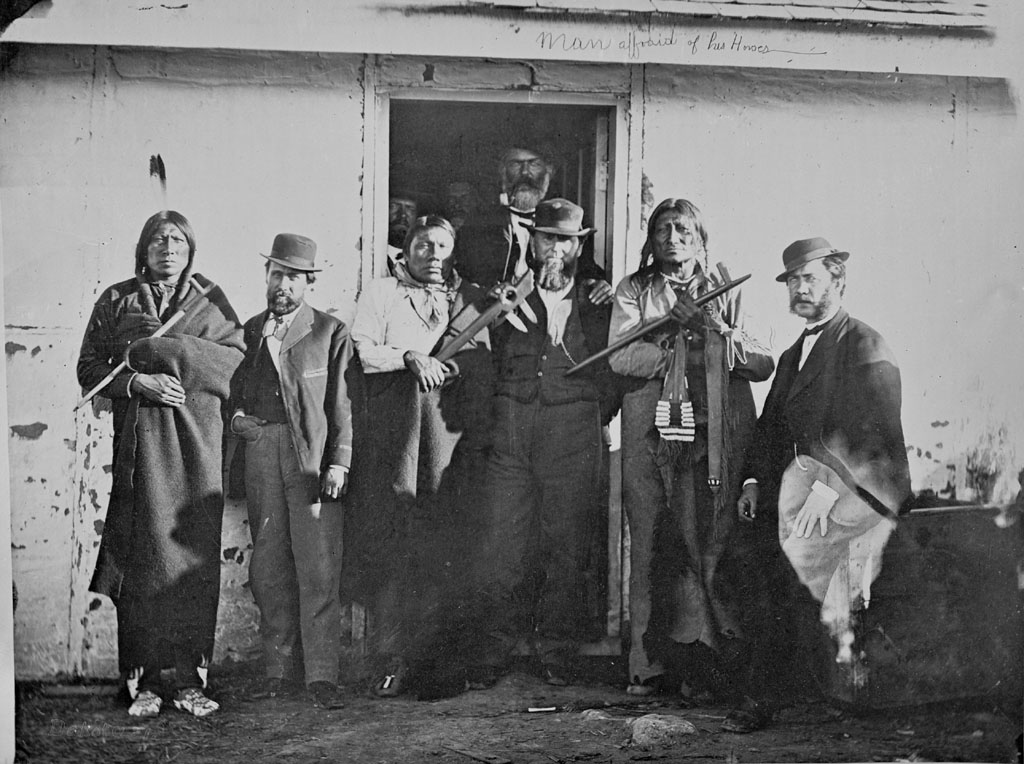 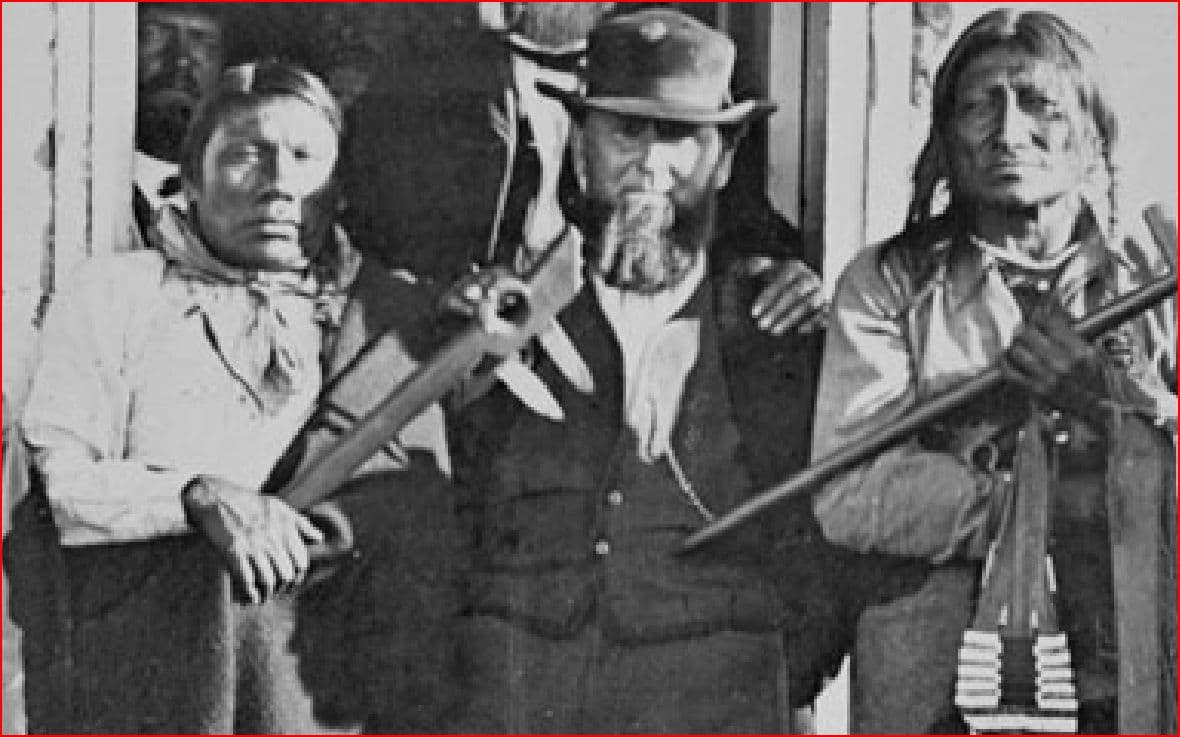 And this link will take you to a pdf of Harry Anderson's article, The War Club of Sitting Bull The Oglala: www.nebraskahistory.org/publish/publicat/history/full-text/NH1961WarClub.pdfThis includes a photo of his three-bladed club. |
|
|
|
Post by gregor on Dec 2, 2016 2:19:50 GMT -5
|
|
|
|
Post by kingsleybray on Dec 2, 2016 4:22:04 GMT -5
Sitting Bull the Oglala (or Sitting Bull the Good, or Sitting Bull of the South) and Packs the Drum were the same man. There are many contemporary letters and documents which state that these are two names for the same man.
At issue is whether the man holding the knife club in the 1868 Ft Laramie treaty photographs is Sitting Bull. Is he the same man with the same facial features as in the 1875 delegation photo's?
The identification in the 1868 photos, as far as I am aware, was made when Walter M. Camp took a set of the Ft Laramie pictures to Pine Ridge and asked for id's. This was about 1910, give or take, almost half a century after the pictures were taken. There seems a possibility that the id could be wrong, possibly based on the knife club itself. Sitting Bull the Oglala was famous for his knife club, therefore this is Sitting Bull. Maybe Camp, who knew that Sitting Bull was present at the treaty and signed it, thought 2 + 2 added up. That may be how it went. Maybe not. But Sitting Bull and Packs the Drum were two names for the same man.
|
|